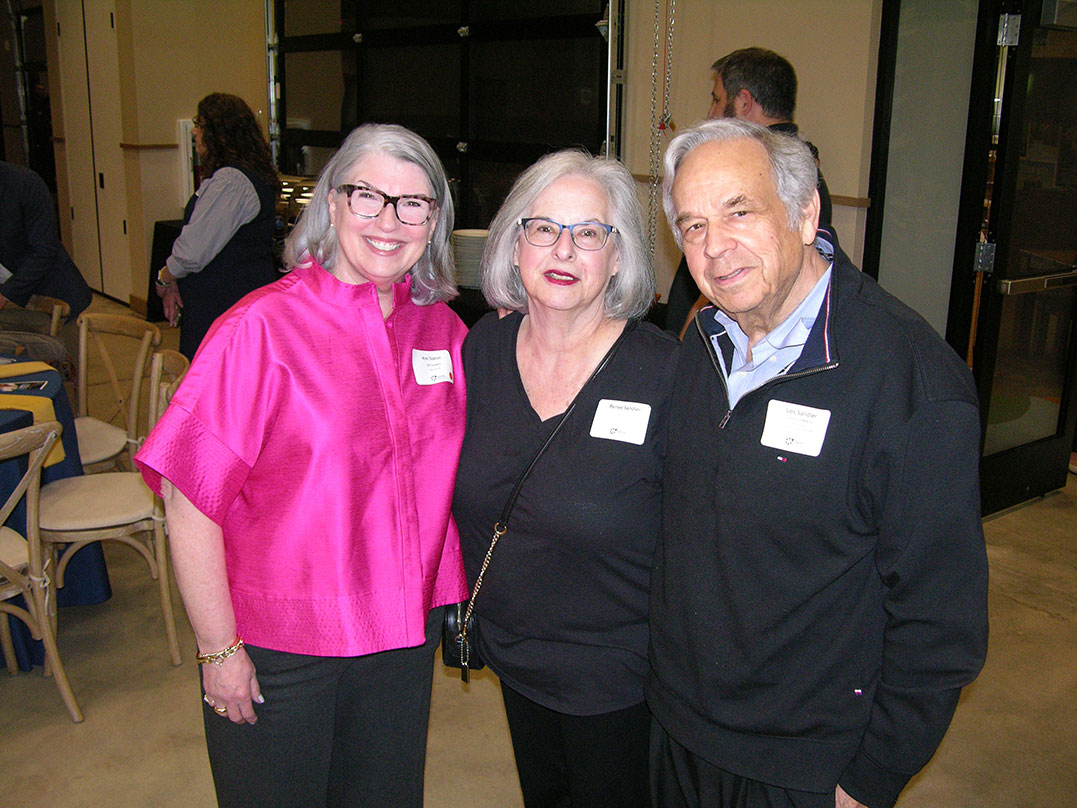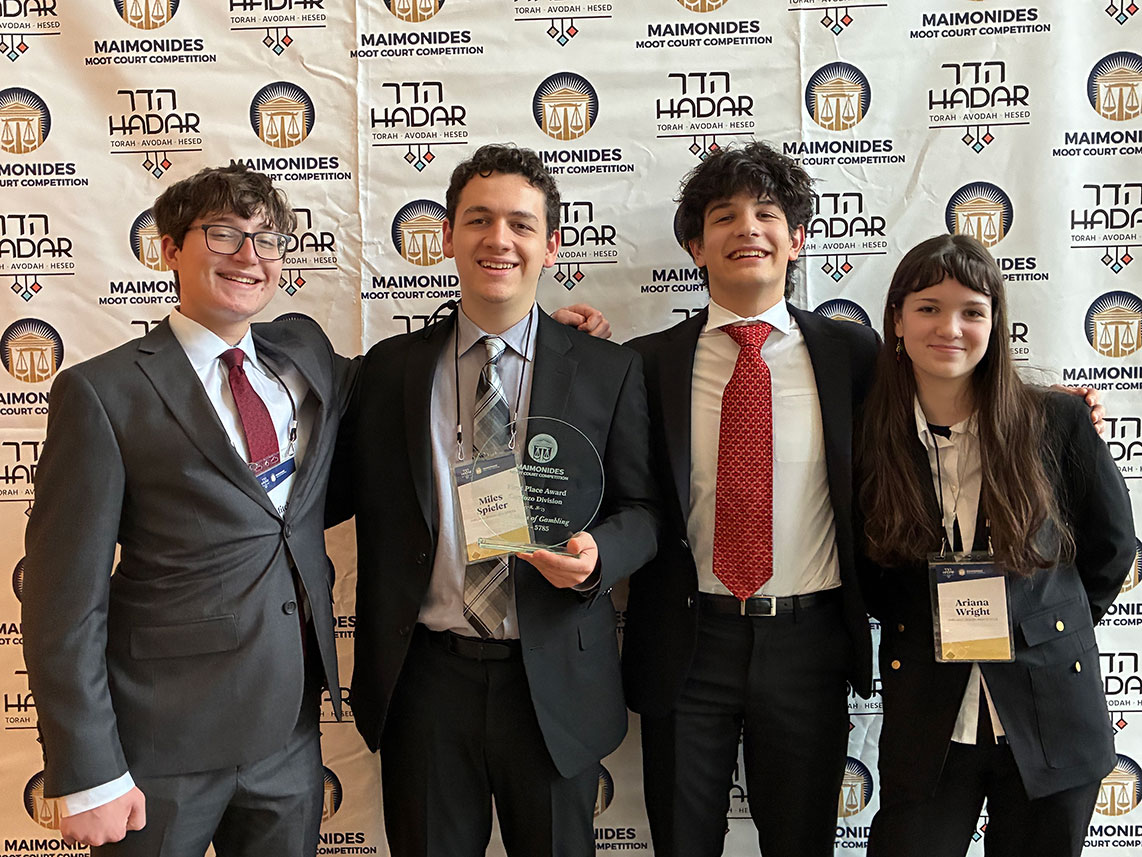Photo credit: JFS
Participants in Jewish Family Service Adult Day Services program proudly display their work. On Tuesday, May 21, roughly 30 people attended an art exposition honoring the achievements of these unique artists. The program helps older adults with memory challenges by regularly exposing them to physical, social, and cognitive activities — including art.
Submitted by Jewish Family Service of Cincinnati
From the moment Jewish Family Service of Cincinnati (JFS) opened Adult Day Services in November 2023, Manager Becky Borello knew that she could inspire the program’s participants — all of whom face cognitive challenges — through the creative process of making art. “From the beginning, it has been our intention to have an art exhibition,” Borello said. “An art project provides an important benefit to our participants. It lets them exercise choice: choice in colors, choice in style, choice in design. And it gives them a sense of accomplishment: ‘This is what I created. This is a work of art that I can give to my family members and be proud of.’ And so, when we celebrated six months of being open, we wanted to showcase their outstanding work.”
The art show was held on Tuesday, May 21, from 4:00 to 6:00 p.m., with approximately 30 people in attendance — from friends and family to Adult Day Services staff and supporters. A harpist provided a sophisticated musical soundtrack, and elegant trays of catered fruits and cheeses were offered.
JFS created Adult Day Services in response to a growing community issue: older adults experiencing changes in their mental acuity were increasingly at risk of becoming socially isolated. Borello explained how this risk — whether caused by circumstances or a desire to avoid embarrassment — can accelerate cognitive decline. “Self-consciousness is a factor; these are high-functioning people who are fully aware of their disease process. But if a seed is planted in a closet, it’s never going to thrive. That’s why our program is based on a social model. We provide mental stimulation, physical stimulation, socialization, and spirituality. Each day, we try to touch on all of those key themes.”
Judging by the success of the art exhibition, Borello’s vision is flourishing. Marlene King said the emphasis on art has rekindled a flame in her husband, Jack, who participates in the program. “Jack used to do art at the [Mayerson] JCC every Thursday. It was really great, but as his illness progressed, he wouldn’t touch the art supplies we had in our home. Now, with this program and Becky’s influence, Jack is making art again. When Becky called to invite me to the art show, she was so excited. She said, ‘I want you to see how Jack combined his colors.’”
Borello explained that her vision could never have been realized without the generosity of the community. “I’m grateful for the support that we’ve had from Jewish Home of Cincinnati, and, importantly, the support we received from a generous donor who wished to remain anonymous,” she said. “This person had heard about the artistic aspect of our program and he donated early on. That allowed me to purchase artist-grade supplies. These are expensive, but they create a much nicer product. Our program is uniquely fortunate in this regard. His donation also allowed us to present our finished artwork in a more dignified way.”
Not only was the artwork beautifully mounted and framed, but a biography and framed portrait of each artist were also presented alongside their work. Borello said that the reactions to these bios were an unexpected highlight of the event. “They enjoyed reading their own bios — and then reading the bios of their counterparts. They were proud. They were happy. They were all smiling. They were the people in the spotlight. And their family members were impressed with what their loved ones had created.”
Barry Kogan is a program participant who had his work on display, and his wife, Stephanie Kogan, shared how the quality of the art show was a reflection of Adult Day Services in general. “I am not exaggerating when I say that every single time I drive Barry home, he tells me how wonderful this program is,” she said. “He’ll say they had music, or they did an art project, or they had a dancer from the Cincinnati Ballet come in and do ballet moves. They have drums and they recently had a drumming circle. They’ve started cooking. You know, things that really enrich their lives. And the expression of happiness on his face just tells me everything. Very often he’ll say, ‘I’m so glad you found this program. Thank you.’ That’s how much he enjoys it; he thanks me for bringing him to this program.”
Kogan further stressed how important it is for her husband to be with others who are dealing with the same challenges. “These are people who have to come to terms with what they can no longer do or remember. And when they’re with other people who can identify with similar feelings of uncertainty, there’s a comfort in knowing that it’s not just them experiencing that.”
Borello noted that the idea of participants identifying with each other was fundamental to Adult Day Services. “These are individuals who’ve run businesses. They’ve had significant jobs and successful careers. They’ve run all types of things. But now, they’ve lost the ability to communicate or the ability to make choices for themselves. And when that happens, there are feelings of loss and anger that come along with that. And so, through the process of creating art, they are better able to work through those feelings in a safe and productive way. Instead of seeing the illness first, we see the artist first. We see the human being first.”





